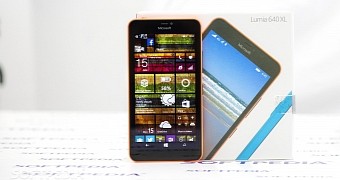Microsoft has already abandoned phones in terms of both hardware and software, but before this, the company was considering several approaches to become one of the top players in mobile.
And patents making the rounds these days show that Microsoft thought of new phone features a long time ago, even though just a few of them entered mass production.
Such an example is a speaker that’s directly integrated into the display of a phone, thus helping save space inside the device and, at the same time, allow for other major improvements, like edge-to-edge screens and sound aimed directly at the user.
The patent called “DISPLAY STRUCTURE HAVING A VISUAL DISPLAY AND AN AUDIO OUTPUT” was recently discovered by MSPU and it was submitted by two former Nokia employees who’re no longer part of Microsoft either, though the technology still belongs to the software giant.
High costs, complex implementation
While the actual costs of the technology could be the one raising all the challenges, Microsoft says that it’s possible to replace the speakers on a smartphone by installing a piezoelectric layer on an OLED screen. Using vibrations, this assembly would generate sounds at varying frequencies, while also using the actual vibrations to generate haptic feedback, thus replacing the need for a vibrating motor as well.
“A display surface structure comprises a deformable transparent surface layer, a visual display layer visible through the deformable transparent surface layer, a piezo-electric layer in mechanical communication with the deformable transparent surface layer, and a drive circuit in electrical communication with the piezo-electric layer. The drive circuit sends a drive signal to the piezo-electric layer to cause the piezo-electric layer to deform the deformable transparent surface layer and generate an audio output,” Microsoft explains.
Since Microsoft itself has already abandoned phones, the only way to see this technology entering mass-production is for the company to use it on a Surface device, either the upcoming Andromeda tablet or right on the 2-in-1 model, though this is rather unlikely given the form factor.

 14 DAY TRIAL //
14 DAY TRIAL //